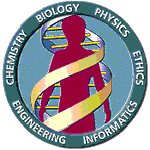
GeneticsGenetics, scientific study of how physical, biochemical, and behavioral traits are transmitted from parents to their offspring. The word genetics was coined in 1906 by the British biologist William Bateson. What's a genome? And why is it important?A genome is all the DNA in an organism, including its genes. Genes carry information for making all the proteins required by all organisms. These proteins determine, among other things, how the organism looks, how well its body metabolizes food or fights infection, and sometimes even how it behaves. DNA is made up of four similar chemicals (called bases and abbreviated A, T, C, and G) that are repeated millions or billions of times throughout a genome. The human genome, for example, has 3 billion pairs of bases. The particular order of As, Ts, Cs, and Gs is extremely important. The order underlies all of life's diversity, even dictating whether an organism is human or another species such as yeast, rice, or fruit fly, all of which have their own genomes and are themselves the focus of genome projects. Because all organisms are related through similarities in DNA sequences, insights gained from nonhuman genomes often lead to new knowledge about human biology. How big is the human genome?The human genome is made up of DNA, which has four different chemical building blocks. These are called bases and abbreviated A, T, C, and G. In the human genome, about 3 billion bases are arranged along the chromosomes in a particular order for each unique individual. To get an idea of the size of the human genome present in each of our cells, consider the following analogy: If the DNA sequence of the human genome were compiled in books, the equivalent of 200 volumes the size of a Manhattan telephone book (at 1000 pages each) would be needed to hold it all. It would take about 9.5 years to read out loud (without stopping) the 3 billion bases in a person's genome sequence. This is calculated on a reading rate of 10 bases per second, equaling 600 bases/minute, 36,000 bases/hour, 864,000 bases/day, 315,360,000 bases/year. Storing all this information is a great challenge to computer experts known as bioinformatics specialists. One million bases (called a megabase and abbreviated Mb) of DNA sequence data is roughly equivalent to 1 megabyte of computer data storage space. Since the human genome is 3 billion base pairs long, 3 gigabytes of computer data storage space are needed to store the entire genome. This includes nucleotide sequence data only and does not include data annotations and other information that can be associated with sequence data. As time goes on, more annotations will be entered as a result of laboratory findings, literature searches, data analyses, personal communications, automated data-analysis programs, and auto annotators. These annotations associated with the sequence data will likely dwarf the amount of storage space actually taken up by the initial 3 billion nucleotide sequence. Of course, that's not much of a surprise because the sequence is merely one starting point for much deeper biological understanding! Contributions to this answer were made by Morey Parang and Richard Mural of Oak Ridge National Laboratory; and Mark Adams of The Institute of Genome Research. |
Last updated:
© Copyright Jan Martinec 1999